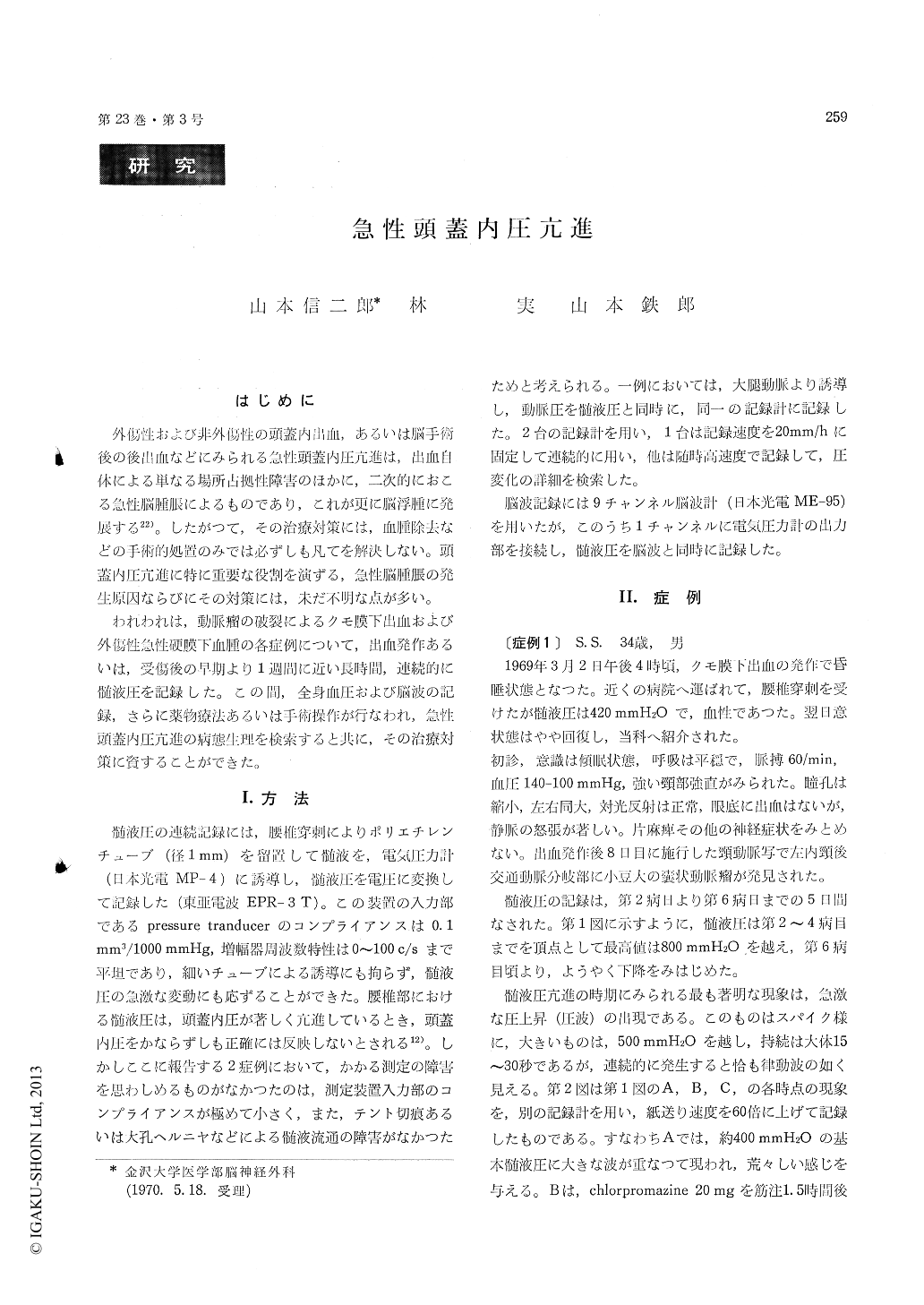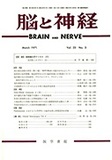Japanese
English
- 有料閲覧
- Abstract 文献概要
- 1ページ目 Look Inside
はじめに
外傷性および非外傷性の頭蓋内出血,あるいは脳手術後の後出血などにみられる急性頭蓋内圧亢進は,出血自体による単なる場所占拠性障害のほかに,二次的におこる急性脳腫脹によるものであり,これが更に脳浮腫に発展する22)。したがつて,その治療対策には,血腫除去などの手術的処置のみでは必ずしも凡てを解決しない。頭蓋内圧亢進に特に重要な役割を演ずる,急性脳腫脹の発生原因ならびにその対策には,未だ不明な点が多い。
われわれは,動脈瘤の破裂によるクモ膜下山血および外傷性急性硬膜下血腫の各症例について,出血発作あるいは,受傷後の早期より1週間に近い長時間,連続的に髄液圧を記録した。この間,全身血圧および脳波の記録,さらに薬物療法あるいは手術操作が行なわれ,急性頭蓋内圧亢進の病態生理を検索すると共に,その治療対策に資することができた。
In cases with acute intracranial hypertension following subarachnoid hemorrhage of rupturedaneurysm and acute traumatic subdural hemato-ma, the CSF pressure showed transient rises called "pressure waves". The waves superimposed on an elevated level of CSF pressure, and could be classified into two types.
One was slow waves in the range of 30 seconds to three minutes in duration, and the other being sharp waves of 15-30 seconds. It was particularly notable that while marked rises in the systemic arterial blood pressure occured synchronously with the sharp waves, opposite was true for the slow waves. The slow waves were usually observed in early or still not severe stages of the intrac-ranial hypertension while the sharp waves wereseen in advanced or maximal stages. When occurring continuously they appeared like rhyth-mic oscillations.
The pressure waves were susceptible to anes-thetics, particularly to barbiturates although they were somewhat depressed by steroids. Also sei-zure-like bursts in EEG appeared synchronouoly with the pressure waves. These suggest that the pressure waves are of neurogenic origin indicating an instability of the vasomotor mechanism of the cerebral vascular bed and an ominous sign of development of brain dysfunction.

Copyright © 1971, Igaku-Shoin Ltd. All rights reserved.


